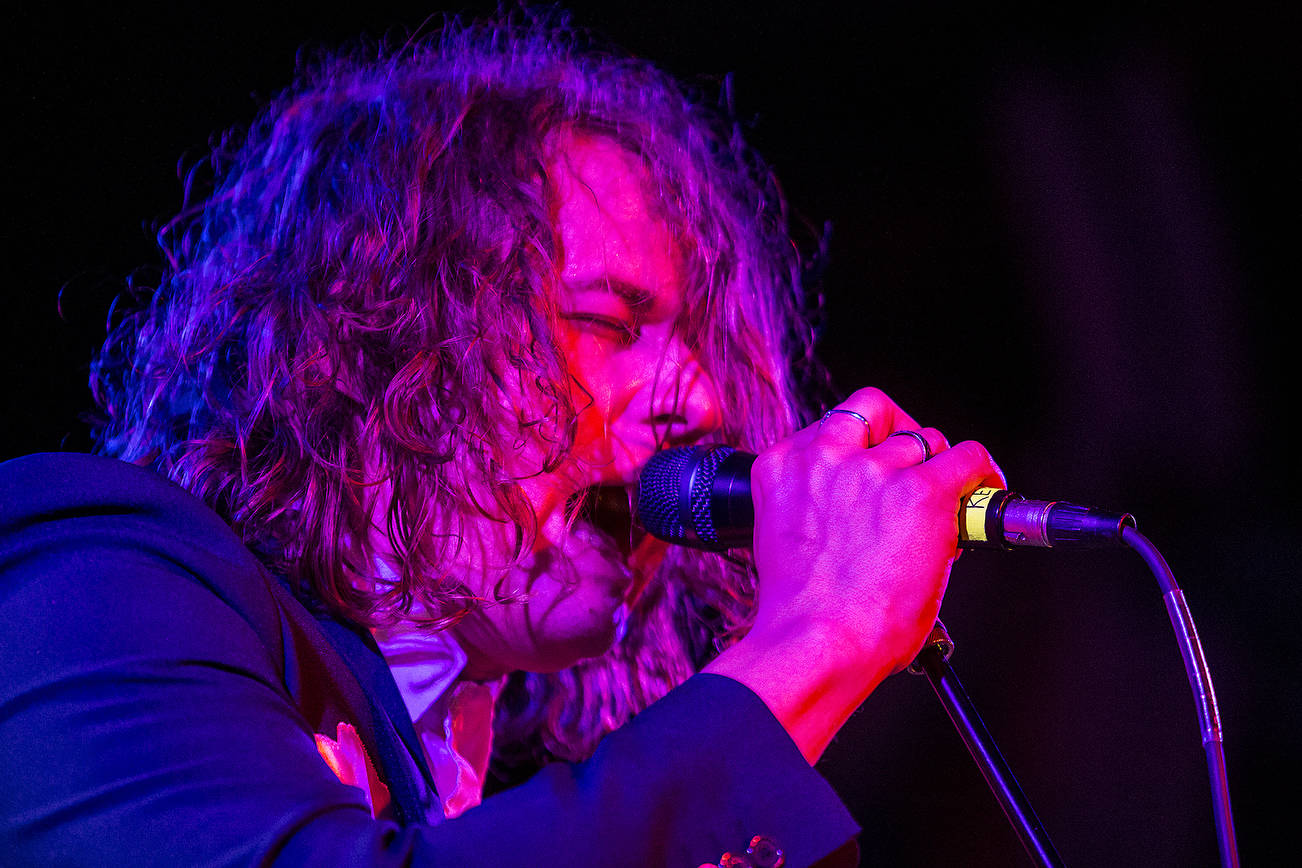IF 65-YEAR-OLD Thomas Jefferson Ferguson is known around West Seattle, it’s more for his eye-catching sidewalk stunts than for his influential but brief songwriting career. But that will soon change. Thanks to an upcoming documentary by New York filmmaker Sam Green and reissues of his two seminal early-’60s albums, Jeff Ferguson—known to his West Seattle neighbors as T.J.—is finally achieving widespread recognition for his musical talent.
“I met Jeff in Colorado, and we were going to be in LA at the same time, so I asked him to come and play with me at McCabe’s,” recalls singer-songwriter John Wesley Harding, who often cites Ferguson as an influence. “We were going to duet on one of his songs, ‘Do You Know What It Means to Be Free?’ We rehearsed the song in the dressing room, and then Jeff said he was going out to get a hamburger. Well, he didn’t come back till the show was almost over, and when he finally appeared, he fell the entire way down the club’s stairs onto the stage, landing in a crumpled heap. Then he said, ‘I got my hamburger. Is it time to do the song?’ So we did the duet, and it was great. I haven’t seen him since.”
Soon after his bumpy McCabe’s appearance, Ferguson plunged into mental illness and ano-nymity.
“It’s so weird. I’m used to seeing T.J. behindour dumpster,” says Kevin Larson, a manager at West Seattle’s Easy Street Records, about the folkie’s resur- gence. “He always wore the same orange shirt. The owner of the store, Matt, would tell the new employees, ‘Watch that guy,’ but I kinda miss seeing him every day. Once I saw him pee on a mural wall—just think, now the city’s thinking of painting one of him.”
Indeed, it’s hard to believe that the gray-bearded T.J. Ferguson, who’s been known to harangue passersby with elaborate tales of FBI surveillance schemes and international money-laundering conspiracies, is actually Jeff Ferguson, the singer-songwriter who traded protest songs with Phil Ochs and counted Nick Drake and Tim Buckley among his acolytes. Finally, with the help of a record-label-financed stint in therapy and a Zoloft prescription, Ferguson’s years of illness and misfortune are coming to an end.
A career as a folk musician seems to be written in Jeff Ferguson’s stars. The only child of New York radical-activist parents, Ferguson’s godfather was Lee Hays, then a member of the Almanac Singers (with Woody Guthrie and Pete Seeger), later of the Weavers.
“Lee used to baby-sit me, and all kinds of people would come around to play and sing—Woody, Pete, Alan [Lomax], and his sister Bess, Leadbelly, and Burl [Ives],” a surprisingly youthful Ferguson recalled over coffee last week. “Burl was really my favorite. He used to pretend he was a horse, and bounce me on his knee.”
The newly rediscovered balladeer is still getting used to the deluge of publicity that’s surrounded him since the Sundance screening of Call Me Fergie. Green’s 90-minute film, a runner-up for the festival’s Audience Choice Award, traces Ferguson’s life from his bohemian Manhattan childhood to his rabble-rousing days at NYU in the mid-’50s and his subsequent incarnations as a Greenwich Village troubadour and nomadic protest singer.
The Tractor Tavern’s Dan Cowan remembers hearing an older Ferguson play at Cowan’s college in Bar Harbor, Maine. “He would come up with these amazing bits on his guitar, almost out of nowhere. It was like nothing I’ve seen before or since.”
Even then, Ferguson’s hold on reality was becoming tenuous. “A bunch of us were walking outside with him after the show,” Cowan remembers, “and he looked up at these lights in the sky, and he got very agitated, and he was yelling, ‘There they are! The flying saucers have finally come!’ And we had to say, ‘No, Jeff—that’s just an airplane.'”
SOMEHOW, during his frenetic travels around ’60s America, Ferguson found time to record two records, 1964’s The Clock Keeps A-Tickin’ and 1965’s Taking It to the Hearth, full of intricate, intensely personal yet political songs. But his friend Bob Dylan had reached the marketplace first, and Ferguson, disappointed at the lack of response to his heartfelt music, began using large amounts of psychoactive drugs. As the ’60s waned, Ferguson’s mental state spiraled into confusion and paranoia; it became impossible for him to play a single chord on his guitar, let alone write and perform his own music.
After a series of troubling events that Ferguson says he barely recalls—including an arrest in Pocatello, Idaho, for indecent exposure, and a run-in with a Nevada sheriff’s deputy over the ritual slaughter of a milking cow—the former musician found a haven of sorts in Washington state. “I never forgot Burl’s description of the Puget Sound, with its pearly gray mist,” Ferguson says with a far-off look in his eyes. “I heard that he moved to Washington, but I never did meet up with him.” Instead, Ferguson traveled from town to town, working when he could, until finally settling in West Seattle.
Decades of obscurity now behind him, Ferguson couldn’t be more thrilled about his rejuvenated musical career. “I feel like I’m finally answering the voices I’ve heard inside all these years,” he crows, grinning from ear to ear. “I just wish I hadn’t wasted so much time. I can’t wait to get back into the business and show those Backstreet Boys what’s what.”






